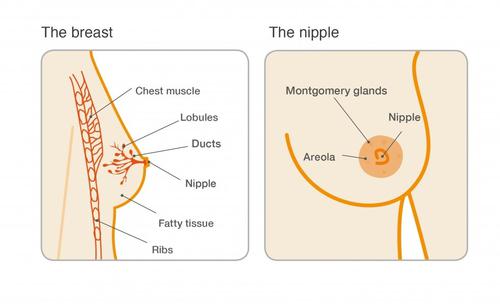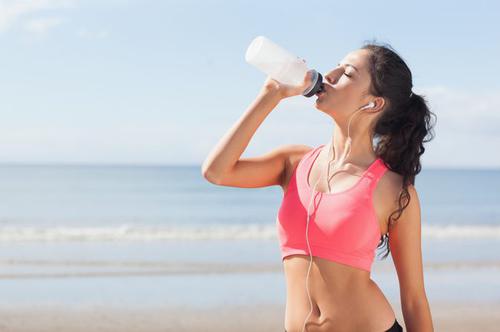Breast Development – What Every Girl Should Know
Breast development happens at the earliest stage of puberty and girls need to understand signs that your breasts start growing. Breast development actually starts while the female is still a fetus, with the development of nipples and breast ducts. However, the real changes that you will typically notice in the breast area will start to occur anywhere between the ages of 8 and 13. Like any changes involving such a mixture of genetics, hormones, and biology, there is no way to accurately predict when breast development will begin, nor when it is actually finished. No matter when, though, every female will go through these changes, and girls in puberty need to be clear about what is happening, why it is happening, and what to watch out for. You should know what normal changes are and what may be indications of concerns.
What Should You Expect to Feel and Notice
The first indication that puberty has begun for girls is typically the development of breasts. Most girls will experience at least a few of these symptoms of breast growth. Some will even experience all of these symptoms of breast growth:

-
Lumps under the nipple. The first sign that a girl's breasts are beginning to grow is generally the development of "breast buds,” when a small and hard lump develops under the nipple. The skin around the nipple (the areola) begins to grow and darken. This lump is small initially and will feel firm (and sometimes painful) to the touch. Please remember this: the development of a lump in the breast at this stage is entirely normal and extremely unlikely to be a sign of breast cancer.
-
Tenderness or pain in the breasts. Breasts begin to grow because of an increase in estrogen and progesterone. These hormones build up in the breasts, increasing the fluid levels. This can cause some pain, similar to growing pains in other parts of the body. As the breasts begin to grow larger, back pain is also common, as the body adjusts to the extra weight in front. Any pain is likely to be mild, but if excessive, a doctor can prescribe medication.
-
Red marks in the area. While you may well wonder if it is normal for red marks to be one of the symptoms that the boobs start growing, it is, in fact, a logical development. The breast is increasing in size, causing some strain on the tissue in the area. This can cause small tears in the tissue, and lead to stretch marks. These will eventually disappear and cause no lasting scar residue.
-
Irritable or sore nipples. The growth of breast buds will inevitably lead to an increase in the size of the areola. This can lead to a feeling of sensitivity and itchiness, or even pain, around the nipples.
-
Asymmetry of breast size. It is extremely common for one breast to be a different size than the other, in the same way that feet and hands can differ slightly in size. An early indicator of how to tell if your breasts are growing may be the realization that one is growing before the other, although the second breast will soon catch up. At full growth, both will be approximately the same size, but if there is variation, it is likely to be small and unnoticeable.
All of these symptoms are common and generally nothing to worry about; however, any concerns should be discussed with a medical professional.

How is Breast Size Determined?
Although you may have heard a few old wives tales, there are really only a few factors which decide what breast size a woman will land out with.
-
Genetics. The main determinant of breast size is heredity. Not just the girl's mother, but her aunts and grandmothers (both paternal and maternal) can provide clues as to what her own breast size is likely to be.
-
Weight. Because breast tissue is mostly fat, your normal weight will have an influence on your breast size. If your weight increases, and along with it your breast size, the skin around the breasts expands accordingly. If you lose weight, some of the fat in the breasts will decrease as overall body fat drops. This may cause sagging since the skin no longer has to support the same level of fat.
-
Exercise. Generally, this won't affect breast size, but some types of exercise may make breasts appear firmer. Exercise also has an effect on weight, so if a woman is exercising a lot, and losing weight, some of this could be reflected in a loss of fat in the breasts.
-
Pregnancy and breastfeeding. During pregnancy, the body starts preparing for feeding the newborn. The pregnancy hormone progesterone will cause the nipples and areola to swell and estrogen works on the milk ducts, causing the breasts to expand in size. While the woman is breastfeeding, her breasts will remain larger than normal, and will only go back to pre-pregnancy size when she stops nursing.
-
Age. During puberty, the breasts are still growing, and so their true size won't be determined until this process is complete. However, further changes occur with age. Even if pregnancy doesn't occur, the woman will probably notice a change in breast size at menopause. Hormone levels--in particular, estrogen levels--fall as she enters her fifties. Skin elasticity also drops as she ages, meaning that there is less support for the breasts, which can lead to sagging.
From puberty onwards, you need to look after your breasts. During early development, you should keep an eye on how they are developing, and report any concerns to a medical professional. Over time, regular mammograms, breast checks, and discussing any worries with doctors will go a long way in keeping the ladies healthy.
YOU MAY LIKE
-
Strange Feelings in the Stomach: What to Know in the First Trimester of Pregnancy
-
Missed Period Negative Pregnancy Test - Best Tips for You
-
Foods You Must Avoid During Pregnancy
-
Masturbating in the Early Pregnancy: Is It OK and Safe?
-
Skip Your Period on the Pill - Best Recommendations
-
Take a Breather – Why Pregnant Women Are Often Breathless
-
Epsom Salt and Benefits in Pregnancy
-
Erotic Massage Vital Points That Boost Your Sex Life Quality
-
When Do Pregnancy Cravings Start - Best Tips for You
-
Miss One Contraceptive Pill? Don't Panic!
